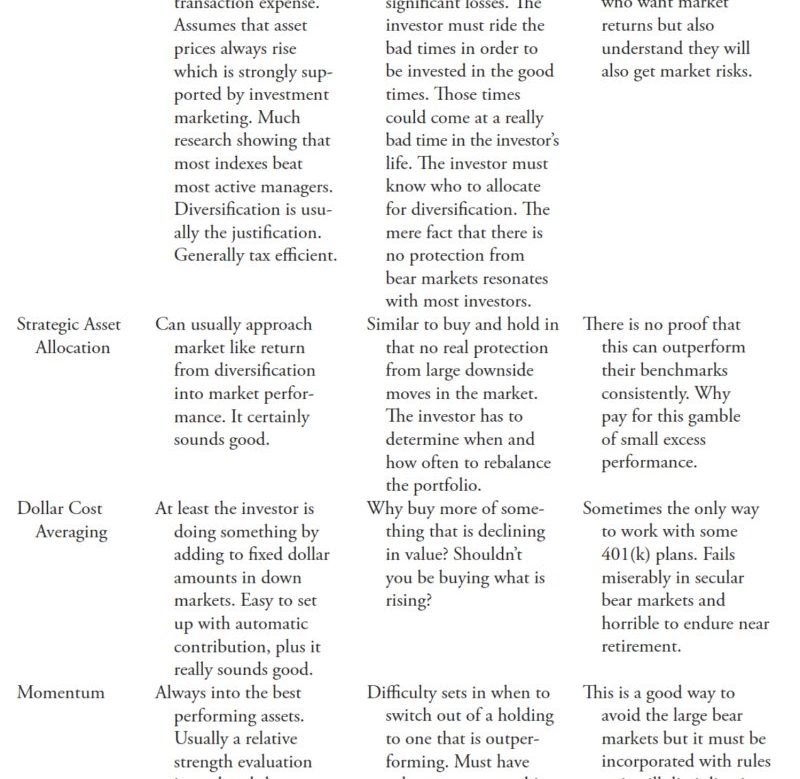Investing with the Trend: A Comprehensive Guide
In the world of finance, one of the most consistently successful strategies is investing with the trend. This approach involves analyzing market trends and positioning your investments in alignment with the prevailing direction of the market. By following the trend, investors aim to capitalize on the momentum of the market and maximize their returns while minimizing risks. In this guide, we will delve into the principles behind investing with the trend, explore various trend-following tools and techniques, and discuss the benefits and challenges of this investment strategy.
Understanding the Trend
Before diving into investing with the trend, it is crucial to understand what constitutes a market trend. In simple terms, a trend is the general direction in which a market or asset price is moving over a period of time. Trends can be categorized into three main types: uptrends, downtrends, and sideways trends. An uptrend is characterized by higher highs and higher lows, indicating a bullish market sentiment. Conversely, a downtrend is defined by lower highs and lower lows, signaling a bearish sentiment. On the other hand, a sideways trend, also known as a range-bound market, denotes a lack of clear direction.
The primary principle of investing with the trend is to identify the prevailing trend and align your investment decisions accordingly. Trend-following investors believe that markets have a tendency to move in a particular direction for an extended period, and by riding the wave of the trend, they can generate significant profits. While market trends are not linear and can experience fluctuations, trend-following strategies aim to capture the overall trajectory of the market movement.
Trend-Following Tools and Techniques
To effectively implement an investing-with-the-trend strategy, investors utilize a variety of tools and techniques to identify, confirm, and follow trends. One of the most widely used indicators in trend-following analysis is the moving average. Moving averages smooth out price data over a specified period, providing a clearer picture of the trend direction. The most common types of moving averages include the simple moving average (SMA) and the exponential moving average (EMA). By comparing shorter-term moving averages with longer-term moving averages, investors can determine the strength and sustainability of a trend.
In addition to moving averages, trend-following investors often rely on trendlines to visualize and confirm the direction of a trend. Trendlines are diagonal lines drawn on a price chart that connect the highs or lows of an asset’s price movement. Breakouts above or below trendlines can signal a potential trend reversal or continuation, providing valuable entry and exit points for investors.
Another powerful tool used in trend-following analysis is the Relative Strength Index (RSI). The RSI measures the speed and change of price movements, indicating whether an asset is overbought or oversold. By combining the RSI with other trend-following indicators, investors can fine-tune their entry and exit strategies and enhance their overall performance.
Benefits and Challenges of Trend Following
Investing with the trend offers several benefits for investors seeking consistent returns and reduced risk exposure. By aligning their investments with the prevailing market direction, trend-following investors can capitalize on the momentum of the market and increase the probability of profitable trades. Furthermore, trend-following strategies are adaptable to various market conditions, making them suitable for both bullish and bearish environments.
However, trend-following strategies also come with certain challenges that investors must consider. One of the primary drawbacks of trend following is the potential for whipsaw movements, where the market experiences sudden reversals that can trigger false signals and lead to losses. Additionally, trend-following strategies require discipline, patience, and the ability to withstand short-term fluctuations in pursuit of long-term gains.
In conclusion, investing with the trend is a time-tested strategy that offers investors a systematic approach to navigating the complexities of the financial markets. By understanding market trends, utilizing trend-following tools and techniques, and carefully weighing the benefits and challenges of trend following, investors can enhance their investment decision-making process and strive for greater profitability in their portfolios. By embracing the power of trends and harnessing their momentum, investors can position themselves for long-term success in the dynamic world of finance.

